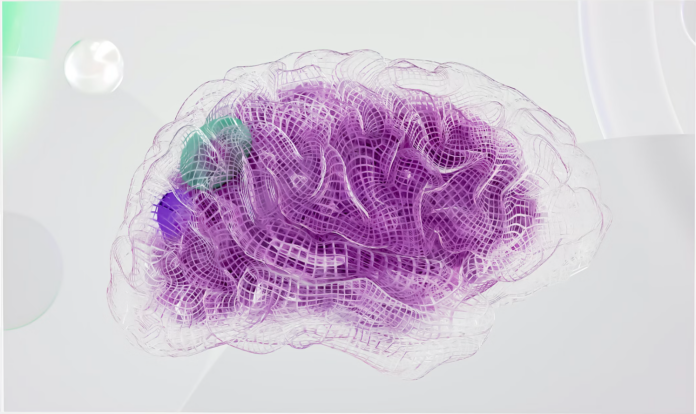Coined just before the beginning of the 21ts century, the term neuroaesthetics refers to experimental science which combines neuro-psychological research with aesthetics. In a nutshell, it explores the way we as human beings respond to beauty. We can all agree that beauty lies in the eye of the beholder, but at the core we all share an understanding of what our brain considers to be visually appealing. Applying neuroaesthetics in digital signage design can provide an additional approach in ensuring the design and layout is well received by the viewer. It might not necessarily mesmerize them, but it will ensure the view is pleasant!
The pursuit of beauty
Research has shown that certain parts of our brain light up when we see something we perceive to be beautiful. While the concept of beauty is largely subjective, our brains are wired to fundamentally consider certain things visually appealing, such as symmetry. The regions of the brain which light up when exposed to such stimuli are also associated with rewards and positive emotional reactions. This makes sense because something which ultimately brings discomfort, no matter how visually appealing at first, will quickly become repulsive. Thus, we can conclude that beauty is not solely tied to things which are pretty to look at, but rather visual experiences which provide a positive emotional response.
Alongside symmetry, predictability of patterns makes it easier for our brain to process information, resulting in a positive experience. This is already a huge tip on applying neuroaesthetics in digital signage design to ensure a positive response in the viewer.
The Golden Ratio
A term commonly used in the field of design, the golden ratio occurs when the ratio of two quantities is the same as the ratio of their sum to the larger of two quantities. Simply put, observing the image below, A+B is to A as A is to B.
This ratio is very important and has been used to analyze proportions of natural objects and even artificial systems such as financial markets. It even occurs in nature, on spiral arrangements of leaves, on our own bodies, and even within our DNA. Human origins aside, applying this ratio can be a powerful way to make design decisions. By repetitively applying the ratio, you will build a spiral which looks like this:
Using appropriate content types for each section, the display layout you build will be very appealing and predictable to the eye. Naturally, you don’t need to build this many sections, and instead decide which best suits your content. Two to three seems ideal, as the elements get progressively smaller.
For a more in-depth analysis of the Golden Ratio, take a look at this article. It may be useful even beyond the field of digital signage.
Direct applications of neuroaesthetics in digital signage design
As you delve deeper into the topic, you’ll quickly start to come up with ways to polish the design and make it more pleasing to look at. Categorize your content by type and appearance. For example, it may be primarily text or animated ads. See which of the following paths you can take to polish up the delivery:
- Explore color psychology to evoke desired emotions in the viewer. Warm colors are exciting, while colder ones are calming. Though, clarity and color coordination should always take precedence. The attempt to evoke an emotion should never make the message difficult to absorb.
- A clear visual hierarchy makes content more legible and guides the viewer’s eyes comfortably. The golden rule is one example which establishes a powerful hierarchy where it’s clear which content is the most important one. If you follow a different design pattern, ensure it achieves the same result.
- Simplify complex information and make it more efficient to absorb. Use concise and clear messaging, eliminating needless words and images.
- Choose easy to read font styles and highlight key words to deliver the message quicker.
- Use subtle animations and transitions to make the content more aesthetically appealing. But do so in moderation because excessive movement may overwhelm the viewer.
- Make use of empty spaces in the layout which act as dividers and reduce clutter.
- Continuously test and gather feedback on the impact of your designs in order to improve them. Observe the impact they have on the end result, for example if more people make purchases or engage with the display in any way.
By building visually appealing content, you’ll make it more attention-grabbing and engaging. Such content is also likely to be remembered, leading to additional engagement farther down the road. Consistent usage of visually appealing layouts and content types also builds expectation and recognition, leading viewers to recognize and absorb content patterns faster in the future.
Consistently appealing digital signage will also make a huge impact on your brand as a whole!
Use digital signage software to the max!
Digital signage software simplifies the application of aesthetic decisions such as the Golden Ratio. Using the Dynamic Composition, you can drag content pieces around the display any way you choose. This includes apps, videos, and dynamic text, among other things. You can fine tune and adjust the layout in any way you see fit.
Digital signage apps are a treasure trove of aesthetics you can freely adapt to your own branding style. They already come with smooth animations, gradient backgrounds, and easy-to-read fonts. You can implement overlays shaping the edges of content elements in any design you opt for, whether it be a smooth and curvy edge, or sharp and angular ones. Explore the entire library of apps and templates available at OnSign TV right away!
Featured image by Google DeepMind.








